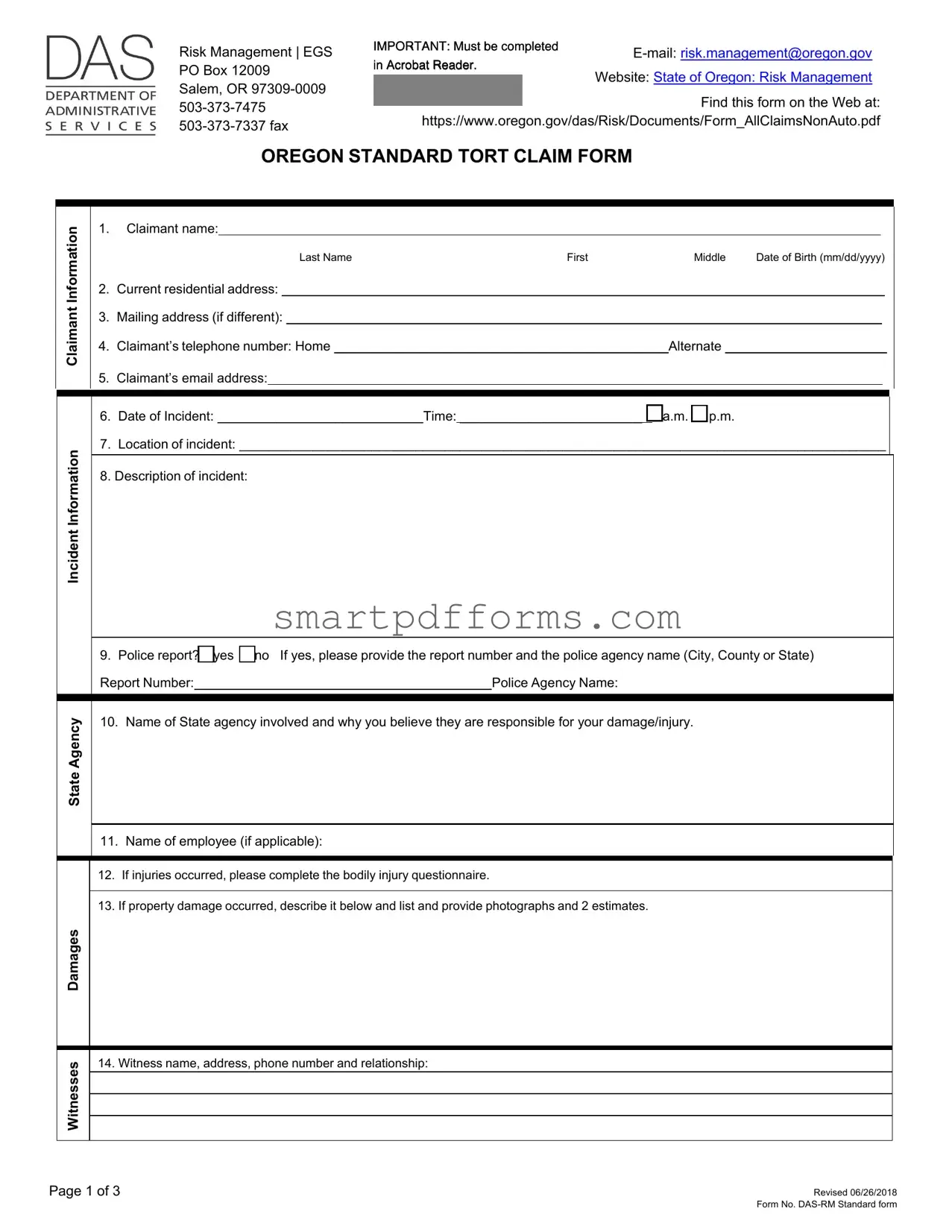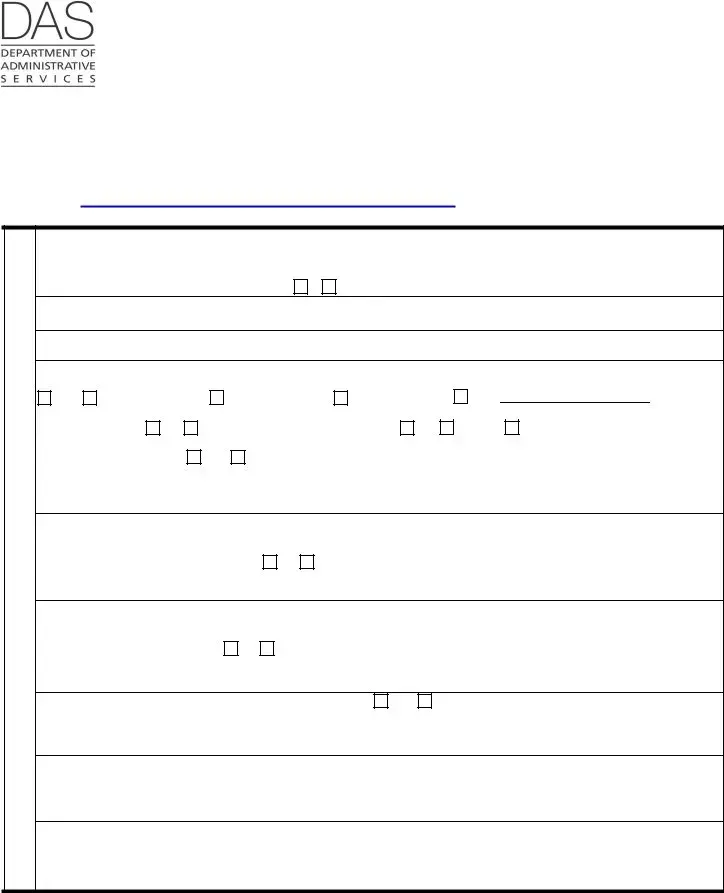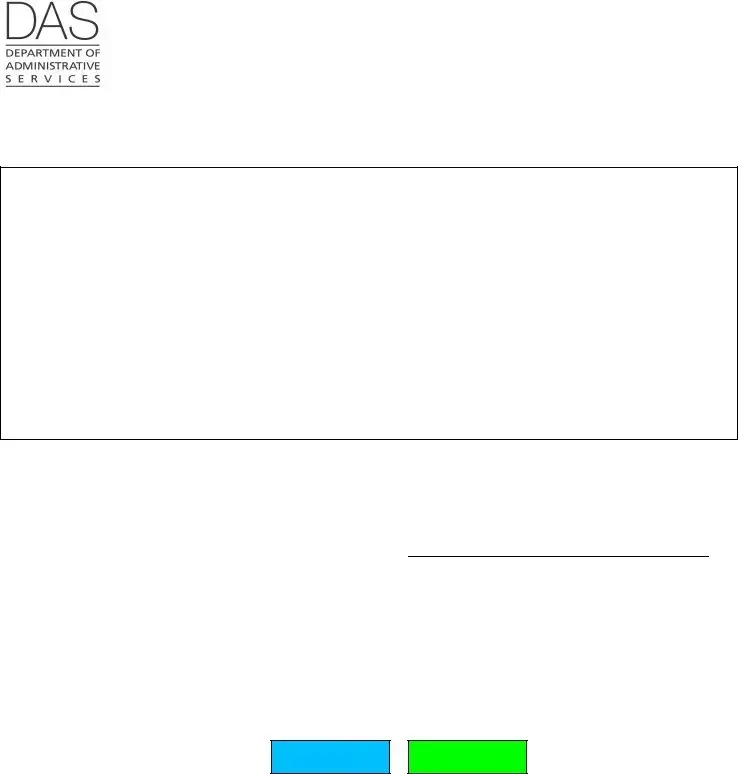Blank Oregon Tort Claim PDF Template
The Oregon Tort Claim Form serves as a crucial document for individuals seeking to file a claim against a state agency in Oregon, detailing incidents that resulted in personal injury or property damage. It requires comprehensive information, including claimant details, incident specifics, and evidence of damage or injury, to be submitted to the Risk Management Division. Emphasizing the form's completion in Acrobat Reader and noting the stringent requirement to submit it within 180 days from the date of loss, it stands as a procedural step for holding state entities accountable. For guidance on filling out and submitting this form, click the button below.
Make This Document Now



